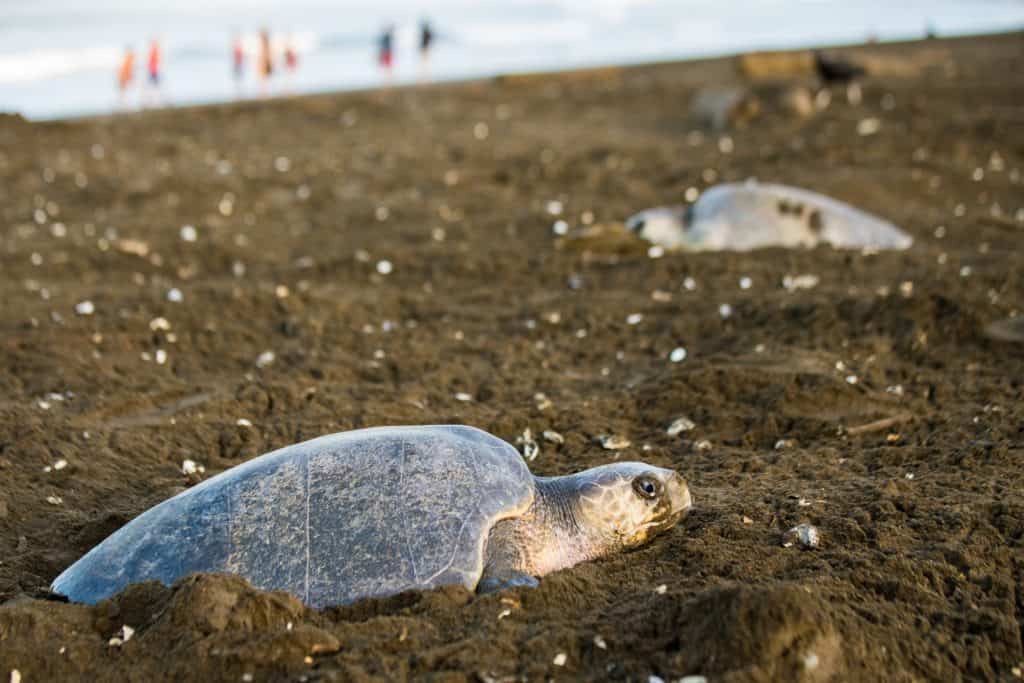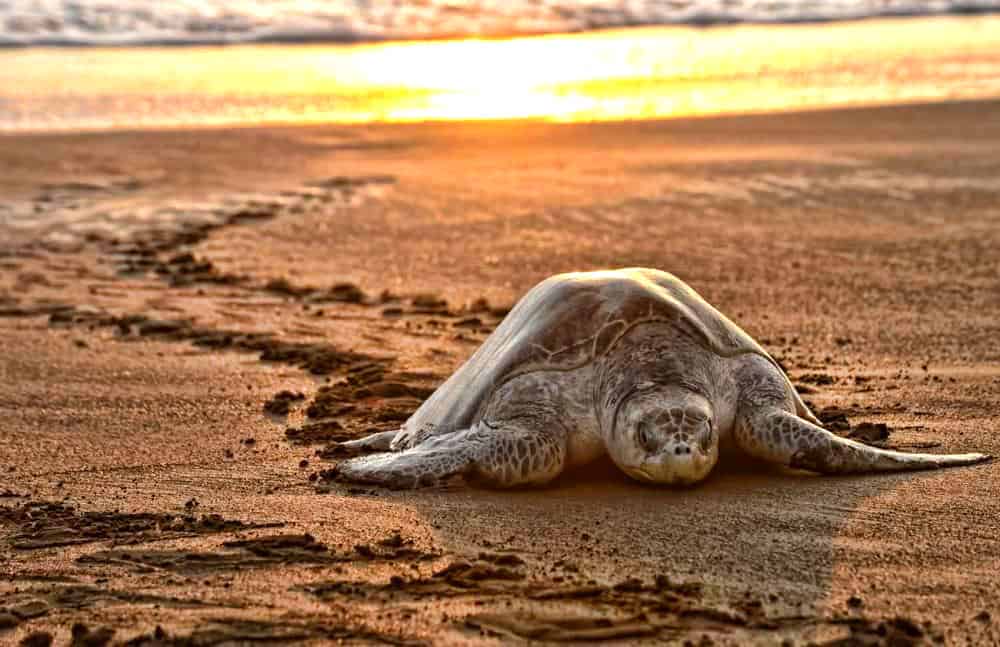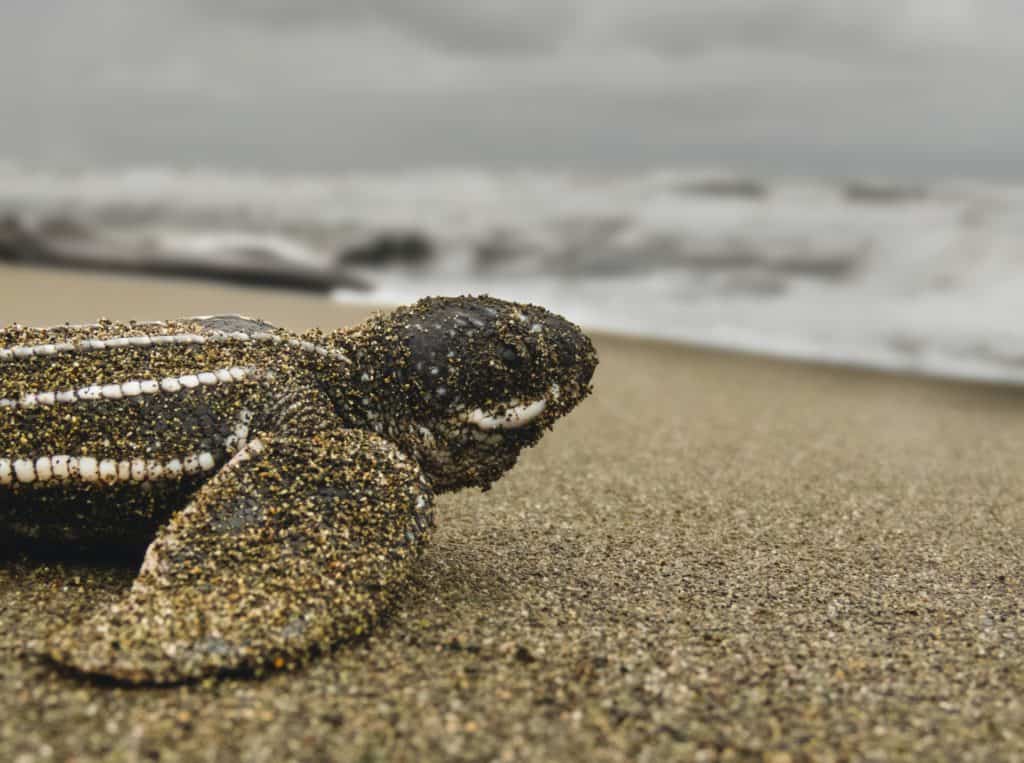
The best sea turtle nesting site in Costa Rica is in Ostional. Ostional is home to largest arrival, at one time, of Oliver Ridley and Kemp Sea Turtles. This event happens during the rainy season when the nights are darkest.
A large gathering of animals can indeed be considered scenic, and one of the best ones can be found in Costa Rica, namely the Oliver Ridley and Kemp Turtle Arribada in Ostional Beach. What exactly is the turtle arribada? Why does this happen? What can you expect to find in such a strange phenomenon?
This spectacular event happens year after year in Costa Rica when the Oliver Ridley and Kemp Turtles return to the same Costa Rica beache of Ostional to lay their eggs. Why does this happen? What can you expect to find in such a strange phenomenon? Today, we’re going to find out.
The Sea Turtle Arrival in Ostional
The word “Arribada” is a term used to describe the mass gathering of turtles in Costa Rica. Arribada itself means “arrival” in Spanish. This mass gathering usually happens in Central America, which includes Ostional Beach on Costa Rica’s Nicoya Peninsula.
This phenomenon isn’t exclusive to Ostional Beach at all, with Costa Rica’s Caribbean side also having its own Arribada, though not as popular as the ones that occur at Ostional.
The turtles that gather in the beaches of Costa Rica do so in order to nest and lay their eggs in the country’s rich volcanic sands. This unique nesting behavior usually involves two species of sea turtles: The Olive Ridley Sea Turtle and the Kemp’s Sea Turtle. The Olive Ridley Sea Turtle is more common in Costa Rica’s Pacific Coast, while the Kemp’s Sea Turtle is more common in Costa Rica’s Caribbean Coast.
Other sea turtles also lay their eggs in Costa Rica’s coast, such as the Leatherback Turtles, the Hawksbill Sea Turtles and the Pacific Green Sea Turtles. These turtle species don’t lay their eggs in Costa Rica on the same scale as the Olive Ridley Sea Turtle, however.
Costa Rica Turtle Protection Efforts
Many sea turtle species are either vulnerable or endangered, which means that if no action is made, they are well on their way to being extinct. Lucky for these turtles, however, the Costa Rican government has been very proactive at protecting these turtles and keeping them alive.
The Turtle Arribada has become such a significant cultural event in Costa Rica that in 1982, Ostional Beach has been declared a protected wildlife area. By 1984, the Ostional Wildlife Refuge was created to further improve the Costa Rican Government’s ability to protect the sea turtles nesting on the beach. Today, the protected area includes 3 miles of coastline, a far cry from the original 200 meters designated in 1982.
In 1987, the government has allowed locals to harvest turtle eggs in the first three days of the turtle arribada, in an attempt to lessen the instances of poaching and protect the traditional livelihood of the people.
In exchange, the locals living in Ostional protect the area from poachers and animals that may dig up and destroy the remaining turtle eggs, including pigs, dogs and vultures.
Thanks to the locals’ and the government’s efforts, hundreds of thousands of turtles come to nest every year in Ostional, and the number keeps on growing each year.
Arribada Season in Costa Rica

Arribada in Ostional Beach can happen throughout the year, but turtles visit the most during the dry season and in the wet season. The biggest synchronized nesting behaviors happen between the months of July and December, during the rainy season, where as many as 300,000 individuals lay their eggs on Ostional Beach.
This season is so popular for sea turtles, in fact, that it’s possible to observe two Arribada events in one month during the rainy season in a single year.
The turtles’ nesting behavior is directly corelated to the lunar cycle. Turtles stay close to the beach 10 days before each month’s new moon, where the sea turtles gather in large groups just off the coast.
They then start moving to the shore at around 8 p.m. to 4 a.m., when the night is at its darkest. Turtles prefer to lay their eggs in the dark where they are less likely to be seen by predators, although it’s possible to see some of them early in the morning or at midday.
The best time to observe the turtle arribada is in the months of September and November, when the beaches are at their most populated. In fact, it was in November of 1995 when the largest Arribada event was observed, with as many as 500,000 sea turtles coming to nest.
Why Do Sea Turtles Have this Behavior?
Sea turtles have a peculiar ability to return to the place where they were born to nest. They normally wouldn’t lay their eggs anywhere else. Many Olive Ridley Sea Turtles call Ostional their home, and as such, every sea turtle you see laying eggs on the beaches of Ostional were once born there.
Every turtle you see in an Arribada is female, since only females need to go to shore to lay their eggs. Male sea turtles spend the entirety of their lives out at sea. Even when turtles mate, they do so underwater.
After the Costa Rica Arribada

Once the larger waves of Arribada are done, baby turtles start popping up on the beach and do their own synchronized march to the sea after a month or two. It usually takes 45 to 52 days for an egg to hatch.
Normally, turtle babies will have to contend with vultures, sea birds, dogs, and other animals that hunt and eat them before they can reach the relative safety of the waves. This means that not many turtles manage to survive to maturity, which is when they’re about 10 to 15 years old.
Ostional Beach is a very special place, however. Thanks to the government’s support, the locals are encouraged to help the baby turtles on their way. In fact, many locals, particularly women and children, have made it their mission to guard these hatchlings from predators and poachers as they travel to the sea.

